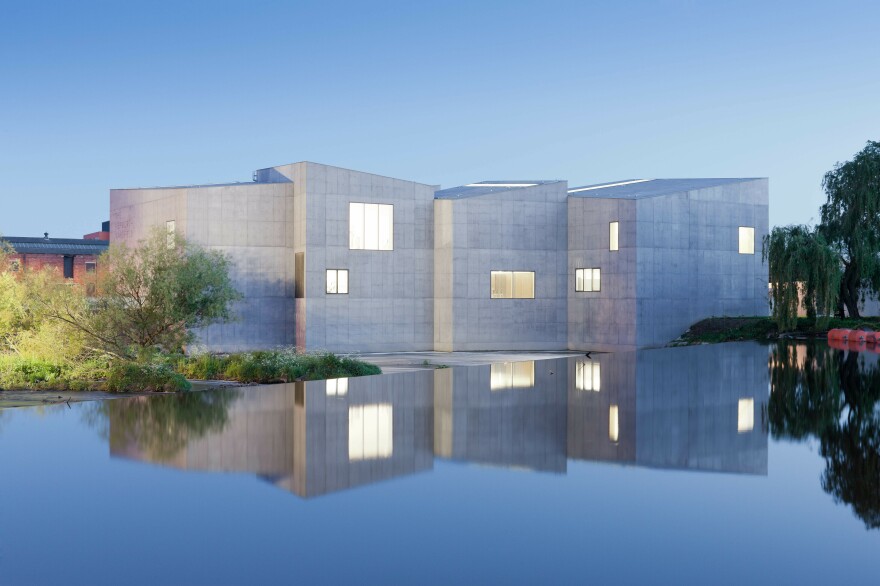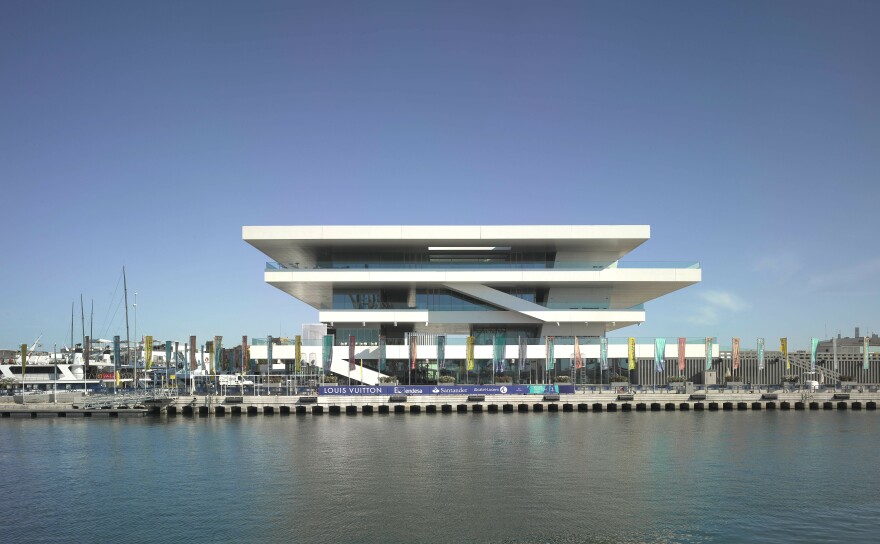Sir David Chipperfield is the latest winner of the Pritzker Architecture Prize, the prestigious award that has gone in the past to the likes of Frank Gehry, Luis Barragán, Oscar Niemeyer and Zaha Hadid.
Unlike those starchitechts, Chipperfield creates understated buildings, including many elegant and dignified museums (and additions to museums), such as the campus of the Saint Louis Art Museum in Missouri, Turner Contemporary in the United Kingdom, Museo Jumex in Mexico City and Kunsthaus Zürich in Switzerland, as well as the Des Moines Public Library.

Crisp and minimalist, his aesthetic is timeless, rather than trendy. As the Pritzker jury wrote its citation, "We do not see an instantly recognizable David Chipperfield building in different cities, but different David Chipperfield buildings designed specifically for each circumstance."
How is the 2023 Pritzker laureate feeling about being described as not "instantly recognizable?"
"I'm happy with that," Chipperfield said to NPR. "The idea of the architect's signature has become a rather overstated ambition."

A Chipperfield building is one that thoughtfully blends into its context, says architecture professor Mabel Wilson. "It's also a building that's very simple and precise," she told NPR. "It isn't something that comes at you all at once but something that's very measured. And I think that kind of exactitude describes Chipperfield's practice."

In 1997, Chipperfield's firm was picked to renovate Berlin's Neues Museum. Built in the mid 1800s, the museum was bombed nearly to pieces during World War II, then sat derelict in East Berlin. "The building had stood as a ruin for more than 50 years," Chipperfield said in a 2011 TedX talk. "History had somehow left it behind."
Chipperfield preserved the remnants as part of the design. "That was an incredibly controversial decision and it put me in dialogue, let's say, with the citizens of Berlin," he explained. The process was, he said, an example of the collaborative effort Chipperfield sees as central to his practice. Berlin is also home to huge, spare Neue National built by Mies Van Der Rohe in 1968, which Chipperfield lovingly renovated decades later.
"That's an amazing modernist icon," says Mabel Wilson. "That museum is actually one of my favorite buildings in the world."
The world is filled with hideous modern architecture, Chipperfield acknowledged during a 2011 TedX talk. "No wonder you hate us," he said, showing a slide of a gloomy, grey Holiday Inn standing, he said, mere meters from his home. "This is appalling."
In the talk, Chipperfield decried how so many buildings all over the world contain the DNA of bad modern architecture, due to cynical clients, a construction industry consumed with finishing fast and architects unconcerned about building for the future.
"We don't build well anymore," he said, wistfully pointing out an elegant old church standing behind the generically drab corporate hotel in the photo. "In that process, we seem to have lost the physical quality of architecture."
Perhaps something metaphysical as well, the newest Pritzker laureate suggests. Call it architecture's soul.

Edited by: Ciera Crawford
Audio story produced by: Isabella Gomez Sarmiento
Audio story edited by: Ciera Crawford
Visual Production by: Beth Novey
Copyright 2023 NPR. To see more, visit https://www.npr.org.




